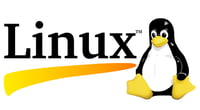Open source software has been around for a while. In fact, software back in the 50s and 60s could probably be defined as open source by today’s standards.
Academic researchers worked collaboratively with corporate engineers to create public domain software under the proviso that their advances were available for distribution, a key philosophy of academia. In those days, software was always distributed with its source code so it could be installed on an incredibly disparate ecosystem of primitive hardware and operating systems.
As computers became more readily available and commercially valuable in the 70s and 80s, this triggered a shift towards recognizing software as assets that can be protected through copyrights, trademarks, and leasing contracts. In 1976, Bill Gates famously wrote an open letter to hobbyists to discourage them from copying and distributing Microsoft’s Altair Basic without paying a license fee.
 Open source made its big comeback in 1991 when Linus Torvalds began work on Linux, a piece of open source software that is now ubiquitous across so much of the technology in our daily lives. With Android phones running an operating system based on Linux, you’re also likely to encounter this open source software in apps such as Twitter or Facebook as it's commonly understood that Linux is the foundation of today’s Internet.
Open source made its big comeback in 1991 when Linus Torvalds began work on Linux, a piece of open source software that is now ubiquitous across so much of the technology in our daily lives. With Android phones running an operating system based on Linux, you’re also likely to encounter this open source software in apps such as Twitter or Facebook as it's commonly understood that Linux is the foundation of today’s Internet.
Linus' Law demonstrates the case for reduced bugs in open source
These days, even the largest tech companies are freely sharing the code underlying their latest technologies as they recognize this will accelerate their own progress as well as the technology itself. Ten years ago, many companies still worried that open source software would open them up to bugs, security risks, and compliance failures. However, the security benefits of open source can be best demonstrated through what’s known as Linus’ Law which states that given enough eyeballs, all bugs are shallow.
Basically, the more people who have access to testing a set of code, the more likely it is that bugs and risks will be caught and fixed. Speed is also an advantage, as bugs in open source software tend to get fixed immediately where proprietary software can take weeks or months to patch vulnerabilities, causing major delays and costs for the businesses using it in the meantime.
Open source is now recognized as perhaps the best way to develop software as it lets unrelated organizations share the burden of developing common infrastructure and compatibility standards. Because literally anyone can participate, regardless of where they work, open source achieves its success by attracting a diverse talent pool of developers with unique perspectives. This broad community of developers is much more proficient at spotting problems or developing new features than the original creators of a piece of software ever could be.
Open source gets closer to what users want
With user experience a key factor in any software system, open source software will always get closer to what users want because users have the opportunity to develop UX that works for them. Rather than a vendor dictating to users what they think users want, developers who double as users are able to make a far superior product.
Where many believe cost is the key factor in adoption, technical superiority is actually the primary reason organizations choose to use open source software.
Although, open source does actually offer significant cost benefits as businesses are able to free themselves from the restrictive vendor lock-in that’s synonymous with proprietary packages. Businesses in these scenarios are at the mercy of the vendor's prices while also being stuck on a treadmill that requires them to keep upgrading software and hardware almost continuously.
Ultimately, open source enables the technology agility you need to drive your organization forward without delays.
Read why Fujitsu chose PostgreSQL to underpin its enterprise database offering, Fujitsu Enterprise Postgres.


